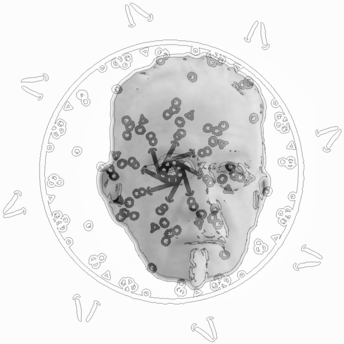Max von Frey1852–1932
Cutaneous sensory “spots” specifically responsive to touch (pressure) and pain, as well as warmth and cold, had been described by Ritter and were isolated later in the 19th century, using more sensitive and specific apparatus. A division of the skin senses into three separate systems (one to register temperature, a second for pressure, and a third for touch) was proposed by Ludwig Natanson (1822-1871). He supported the contention of peripheral independence by describing how these systems succumb in sequence when a limb “falls asleep”. Three sets of independent studies were reported in the 1880s by Blix, Alfred Goldscheider (1858-1935) and Henry Donaldson (1857-1938), and they are jointly credited with the discovery. All were principally concerned with establishing cold and warm spots. Blix continued in the tradition of applying low intensity electric currents to the skin, and he found separate warm and cold spots. Goldscheider stimulated the skin with a range of devices, like needles, heated brass cylinders, cooled capillary tubes, and brushes coated with ether, to isolate the cutaneous spots. Donaldson discovered the warm and cold sensory spots independently in the course of moving metal points slowly over the skin. Not only were there discernable spots for warmth, cold, and pressure, but von Frey found clearly defined spots for pain. The various sensory spots could be mapped and attempts were made to match them to receptors revealed by histological sections of excised skin. Towards the end of the century von Frey advanced the theory that the sensations of warmth, cold, pressure, and pain are subserved by specific end organs in the skin. His theory was soon under attack on empirical as well as theoretical grounds, but it hastened the incorporation of pain into the theatre of the senses. Von Frey is encircled by a pattern derived from the distribution of pain spots on the skin surface.
